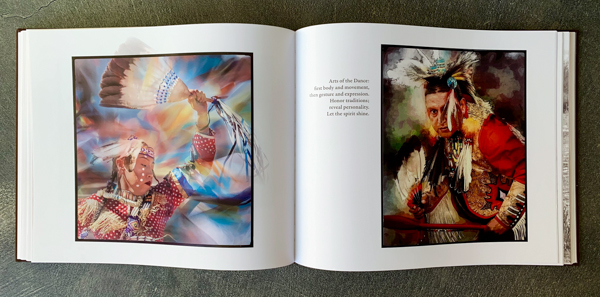
by successfulbob | art books, Guest Post, inspiration, marketing, photography education, photography marketing, success education
Fellow photographer Sara Francis has published photo books and asked to share the trials and tribulations of getting them into print. Please welcome Sara with these guest posts as she shares this five-part series on getting a photo book into print.
Your Photographic Forever; a five-part series that will make you want to put your images into print. Why Print a photo book now?
In spite of distancing and upheaval, it’s a great time to publish a photo book—your photographic art in book form. My personal experience on the road to publish my retrospective and photo-memoir kickstarts this series. Here’s the good news.
All book sales, including art and photo books, are up more than 100%. As photographers, we already own and work with many of the tools needed to conceive and design an attractive, salable book—without paying for costly designers and editors. Printing costs are now much less than you’d expect.
The concept of a book, a stunning, coffee table book, hard cover, with a wide-ranging folio of our own work, well, that’s a goal that most of us have fostered for some time. I tried all sorts of avenues, including university presses for my 60-year photo project and memoir of the Taos Native American Pueblo, the artists of Taos I have known and the wonder of the region. Yes, strong regional interest and potential audience. I discovered four major roadblocks.
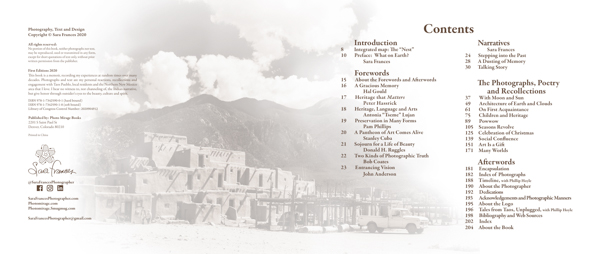
A great title, and also an informative, attractive contents page must grab attention. Note that most books are filed with only the spine showing, so be sure to have title, author and publisher name or mark showing.
Choose your publisher
Institutional presses, if they accept you at all, take at least two years to come to print, and you have little say in the design and presentation. Exclusively photo and art book printers have limited funds and take a handful of projects a year. Many say they approach only photographers they themselves name. No chance to submit. More mainstream publishers are so genre-conscious that images, especially images with text or poetry are simply not a fit they consider. Worse, publishers who claim support for new or regional artists mostly just want to sell you their design and editing services, so you still have little input.
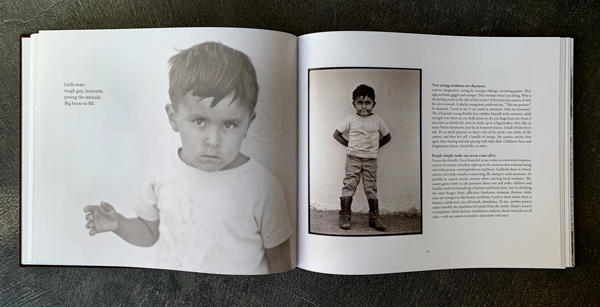
Image and text, both poetry and memoir, tell the story of why I photographed this child.
This the bad news I encountered, and it was a deal breaker. I’ve spent more than three years figuring out how to do it myself, my way. I set out to work through the entire process from concept to design to print to distribute and promote. I wanted my book to look just like I wanted, not someone else’s design. At this point I can give you more good news. Over 50% of all books published are now independently or self published. And this trend continues to increase.

Ceremonial color proves a good foil for the sepia duo-tones in telling the regional story.
Steps forward
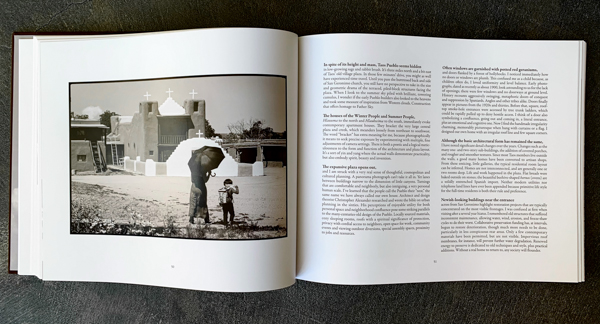
Classic rule of thirds composition in a grab shot, again unfolds the story.
Here’s the breakdown of steps to make the process financially feasible and technically manageable. In this series I hope I can coach you to think seriously about publishing and start the process toward reward under you own hand.
Concept
Audience
Content
Printer choice
Design
Edit
Warehouse
Distribution
Promotion
Bob is the first one to tell you that you don’t get rich on a book. My job is to show you steps to publish that won’t break the bank. And the riches! The satisfaction of a beautiful book is worth everything.
Proceed to Part Two of your book publishing path.
Sara Frances
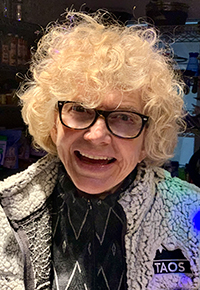 Sara is a many-decades Master Photographic Craftsman out of Denver whose artistic focus has always been book making with images. Her albums won PPA merits starting well before digital capture, as well as for what is believed to be the first ever awarded portrait album. She has evolved from daily, shorter-term studio photography into exclusively special projects of long commitment. Her second hybrid photo/memoir art book, Fragments of Spirit, now published under her own mark, Photo Mirage Books, is available mid-December 2020.
Sara is a many-decades Master Photographic Craftsman out of Denver whose artistic focus has always been book making with images. Her albums won PPA merits starting well before digital capture, as well as for what is believed to be the first ever awarded portrait album. She has evolved from daily, shorter-term studio photography into exclusively special projects of long commitment. Her second hybrid photo/memoir art book, Fragments of Spirit, now published under her own mark, Photo Mirage Books, is available mid-December 2020.
Renewing her lifelong interest in creative writing, she was recently was accepted for Lighthouse Writers Workshop’s Poetry Collective, graduating a year later with a forthcoming hybrid work marrying over 275 manipulated iPhone images with 120 poems: What to Wear to Paradise.
Her three-year quest to learn all facets of the art book industry has influenced her to give back with hands-on publishing classes. She is a judge for the Independent Book Publishers Association (IBPA) and for Colorado Independent Publishers Association (CIPA.) She teaches for Osher Lifelong Learning Institute (OLLI) at the University of Denver, for PPA Super One Day seminars, and also mentors hybrid image/text projects.
To find Sara on social media search SaraFrancesPhotographer or email – [email protected]

by successfulbob | commercial photography, fine art musician portrait, inspiration, marketing, photographer of musicians, photography marketing
This is my seventh year working with an entertainment restaurant. The original relationship was due to a personal project I created and shared with them. A quick recap for those pressed for time will find I photographed a restaurant to learn and practice new photography techniques. I gave the restaurant a framed print. For the full story check out part one on photofocus
The story continued and involves another personal project involving a musician, which was also shared with the owners. When the owners saw my artwork they decided to feature the bands and other entertainers in more of an artistic style. While making the artistic images I also supply the restaurant with additional photos for publicity, posters, marketing and social media.
The trade deal
It would be very difficult for a restaurant to pay cash for this service as the amounts can add up very quickly, especially in the beginning, when many new performers were being documented. I’m a big fan of win-win situations so we worked out a trade agreement.
Hall of Fame
The Hall of Fame has grown to 130 or so images. I create an artistic rendition of the musicians from their live performance. It would be very difficult to track down people after the fact for autographs. I have them provide their signature and ‘message to the house’ with a black sharpie pen on white paper. I invert the printing from black on white to white on black. Change the Blend mode in Adobe Photoshop to Screen and text will appear white. Viola, I have their ‘autograph’ for the art.
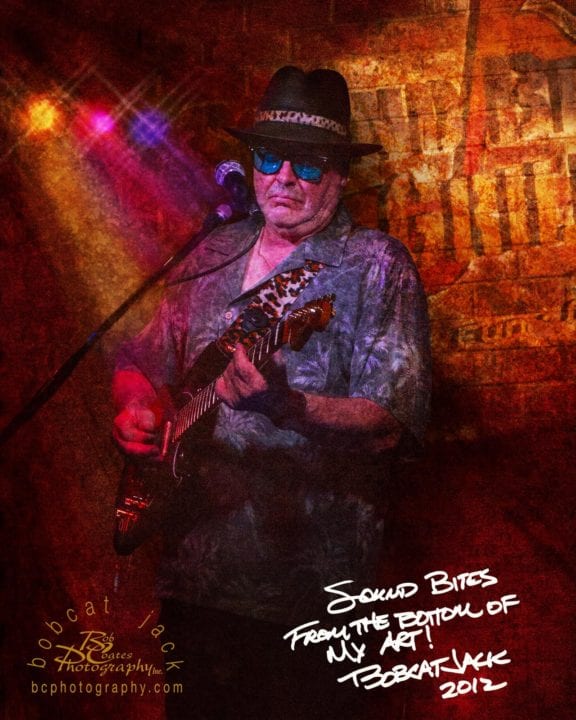
Bobcat Jack: Blues-man with signature and logo art
As part of the deal, art images are printed and framed to 8×10 and hung in the Hall. Additional images are uploaded for the publicity, poster and marketing purposes.
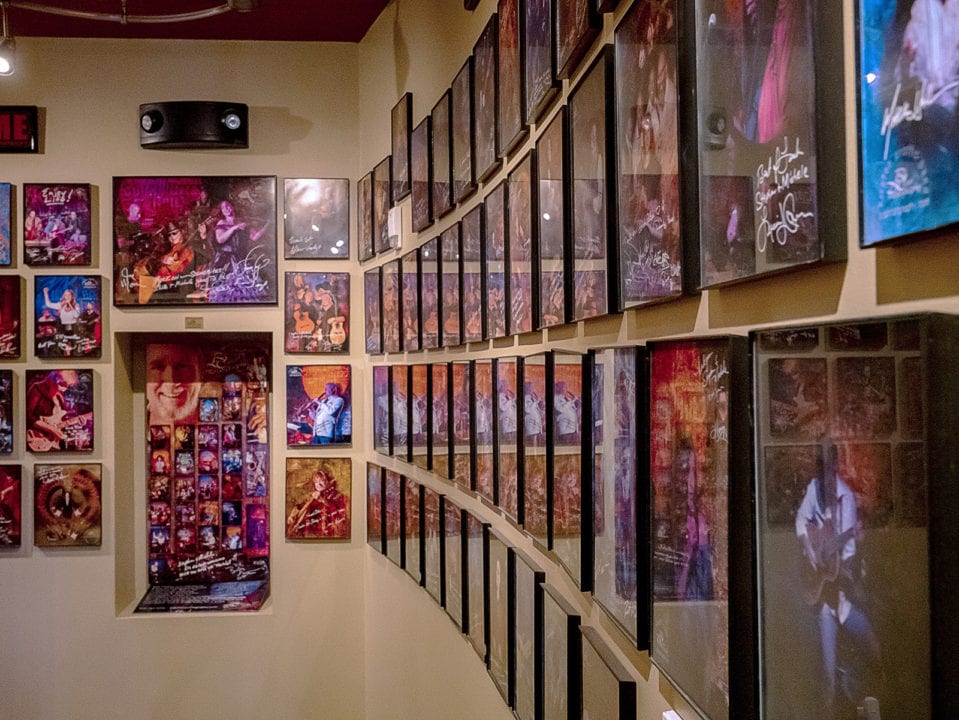
One corner of the SBG Hall of Fame
Additional benefit
In addition to the trade, each of the images is branded with the Bob Coates Photography logo. A metal print in a niche promotes my story and the Hall of Fame information (look in the back of the Hall photo above). I make this deal out to be not only a win-win opportunity but a win-win-win all the way around!
Yours in Creative Photography, Bob

by successfulbob | commercial photography, marketing, Marketing Monday, photography, photography marketing
Monetizing personal projects is important to me. I’ve found it to be a profitable way to build my business. You can too!
First connection
I made a twilight photo of my favorite local restaurant while experimenting with showing the lighted interior at sunset. I learned the easiest way to make an interesting architectural photo of real estate was to set the camera on a tripod. Then capture images over a time period of 20-45 minutes and blend them together in post.
After this image was made I entered it in the Arizona Professional Photographers Association annual image competition. After receiving feedback from the judges I realized there was more to learn with this technique. While the image did not merit it earned an above-average red ribbon. If that was all I got from assigning and completing this personal project it would have been a winner. But I didn’t stop there.

Original personal project image from 2009 that eventually led to lots of work
I framed the print, adding the award winning ribbon and my business card and offered it as a gift to the restaurant. Even though the image had room for improvement the owners loved it. On display in the restaurant in a high traffic area was solid exposure in and of itself. Even more, it helped cement my relationship with them.
New project
Fast-forward about a year and the owners sold this restaurant. I was hired, because of working with the owners in the past, to help promote the renovations of a new space and create interest and excitement for the opening.
We came up with the concept of combining the photos with text. The voice of the owner was used, explaining the thought process of the demolition and decor choices. These were in the form of a set of ‘Polaroid’ photos released over time before the opening party. One example is below you can see more in the extended story on Photofocus.
Additional revenue
I added additional revenue to the project by offering to design customized music inspired metal prints to decorate the niches in the main dining room.
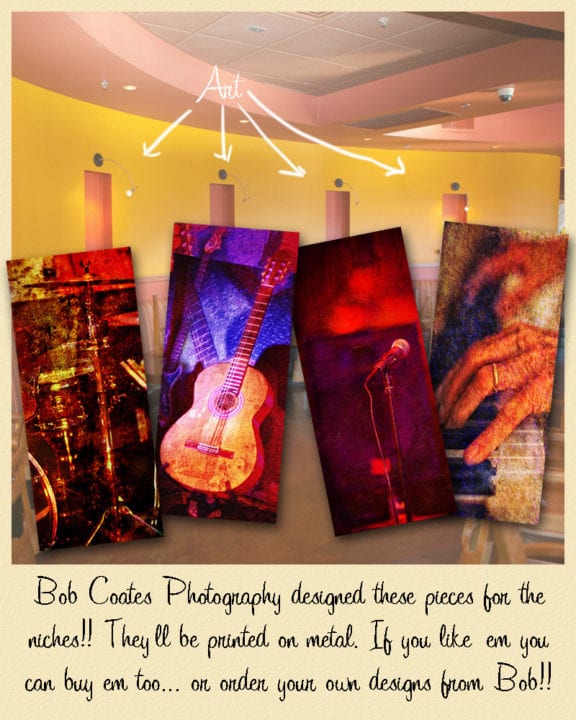
Music niche art images, created specifically for this restaurant
Then it was time to create all the marketing images, which included food, interiors and exteriors with the surrounding red rock views.
To be continued
There were many other images made as you can imagine. It started with making an image on spec and sharing it with a potential client. This story continues in part two where there is cross-pollination with a previous personal project involving the musician. More details on my Photofocus blog post.
Yours in Creative Photography, Bob
PS – See part two of this post here

by successfulbob | Guest Post, marketing, Marketing Monday, photography
Giving Back – Maketing Monday
by Skip Cohen
Giving Back
It’s probably ten years ago I wrote my first post about giving back to the community. It’s such an important part of building your brand that it deserves to be at the very top of your priority list. As business picks up in the fourth quarter, you need to make sure you don’t lose sight of how much it can help you build your reputation.
 Helping Hand Graphic – Bob Coates Photography
Helping Hand Graphic – Bob Coates Photography
Years ago I had the opportunity to hear Jay Conrad Levinson speak. Known best as the originator of the expression “Guerilla Marketing”, he talked about the top 100 things Guerilla Marketers need to do. At the very top of the list was “be involved in your community and charities”. Why? Because, people like to buy products from companies they perceive as giving back.
It’s cause-related marketing at its best and it helps build your brand beyond just being a photographer. Let’s face it, you’re looking for the community to be good to you. So, what are you doing to be good to your community?
Finding a charitable cause in your community couldn’t be easier, but you have to take the time. Just read the local paper. What’s going on in your community? If the school tax bill didn’t pass, then the arts are going to suffer, starting with the yearbook, photo club, newsletter etc. All, perfect matches for you to lend a hand as a professional photographer.
Is there an event coming up that might need your skills as a photojournalist? Everything from a walkathon to organizations like Kiwanis, Rotary, Lions and Exchange Club all have a major charity drive each year.
Check with your local hospital, police force, fire-fighters – they always need help and they always have an event they’re sponsoring. Then there are great organizations like Big Brother and Big Sister.
Within the photographic community, there’s NILMDTS (Now I Lay Me Down To Sleep), Thirst Relief, HeartsApart.org and the Josephine Herrick Project. These are just a handful of non-profits as examples. They all involve photographers and are dedicated to helping make the world a better place.
Although no longer serving let’s not forget PPA Charities, founded over fifteen years ago by Bert Behnke. I’m proud to have been one of the original members of the team along with Helen Yancy, Steve Troup, Dennis and Lori Craft, just to name a few.
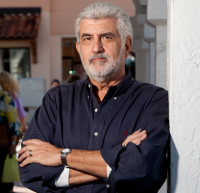 Skip Cohen has been involved in the photographic industry his entire career and previously served as President of Rangefinder/WPPI and earlier, Hasselblad USA. He founded SkipCohenUniversity.com in 2013. Skip is a co-host for “Mind Your Own Business” and “Beyond Technique,” webcasts through Photofocus.com, writes for several publications including Shutter Magazine and is actively involved in several advisory boards for non-profit organizations.
Skip Cohen has been involved in the photographic industry his entire career and previously served as President of Rangefinder/WPPI and earlier, Hasselblad USA. He founded SkipCohenUniversity.com in 2013. Skip is a co-host for “Mind Your Own Business” and “Beyond Technique,” webcasts through Photofocus.com, writes for several publications including Shutter Magazine and is actively involved in several advisory boards for non-profit organizations.

by successfulbob | Guest Post, marketing, Marketing Monday, photography, photography marketing
Waiting for Your Ship to Come In
Marketing Monday with Skip Cohen
I’ve used this quote by Ross Perot in other posts, because it’s so relevant.
“Most people give up just when they’re about to achieve success. They quit on the one-yard line. They give up at the last minute of the game, one foot from a winning touchdown.
If I ask a group of photographers about advertising, somebody will always say, “We tried it once, but it didn’t work!” Ask some people about trying some different lenses or shooting wide open for a different look and you’ll hear almost the same, “I’ve tried it, but my clients like the look I have!” Ask them to move the lights in the studio, the ones that are put in the same spot every day on the masking tape on the floor, and you’ll get almost the same response.
 Empty Dock just waiting for a ship…. or a boat – © Bob Coates
Empty Dock just waiting for a ship…. or a boat – © Bob Coates
Well, what if those photographers are all standing on Ross Perot’s one yard line? What if they just needed to run that ad a few more times for people to contact them? What if they only needed a little more patience?
Trust me, I know it’s tough waiting for your ship to come in. But I’ve seen so many photographers who were able to stay focused, stay aggressive in their marketing efforts and believe in themselves and things did come together.
It’s all about taking action, being patient and not giving up. And since Ross Perot put me on the one yard line, might as well stay with a football theme and give Vince Lombardi the spotlight:
“It’s easy to have faith in yourself and have discipline when you’re a winner, when you’re number one. What you’ve got to have is faith and discipline when you’re not yet a winner!”

Skip Cohen has been involved in the photographic industry his entire career and previously served as President of Rangefinder/WPPI and earlier, Hasselblad USA. He founded SkipCohenUniversity.com in 2013. Skip is a co-host for “Mind Your Own Business” and “Beyond Technique,” webcasts through Photofocus.com, writes for several publications including Shutter Magazine and is actively involved in several advisory boards for non-profit organizations.
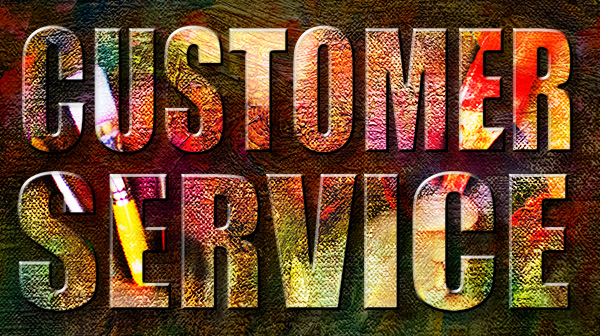
by successfulbob | marketing, Marketing Monday, photography, photography education, photography marketing
Turning Customer Service into an Art Form
How do you make your business grow and have return customers? My buddy Skip Cohen gives you ideas!
“Everyone at one time or another has had a battle with a major corporation. The most common are the phone and cable companies. Each one is a David-Goliath scenario, and they’re draining, but here’s a different way to look at the challenges. Each bad experience is a lesson in helping you understand how to better work with your own customers.
 I’ve often wondered if customer service is simply dead in America. Then, I have something amazing happen that restores my faith. For example, we recently had a problem with Wayfair on a defective outdoor umbrella. I called to find out what we needed to do, and after an explanation, they simply apologized and issued a full credit. No reason to return it – just common sense. They couldn’t have been nicer, and the standard of service they set is the reason we buy more from them!
I’ve often wondered if customer service is simply dead in America. Then, I have something amazing happen that restores my faith. For example, we recently had a problem with Wayfair on a defective outdoor umbrella. I called to find out what we needed to do, and after an explanation, they simply apologized and issued a full credit. No reason to return it – just common sense. They couldn’t have been nicer, and the standard of service they set is the reason we buy more from them!
The experience got me thinking about the ingredients for great customer service. Photography is a word-of-mouth industry and providing great service is one of your very strongest marketing tools. Over the years I’ve written a lot about Customer Service and here are a few easy to remember tips to help you become a powerhouse in your reputation for customer support.
- Exceed expectations!
- Be cheerful! I know it sounds basic, but you can tell when somebody is smiling, even on a phone call.
- Give people the answers to the questions they’re asking.
- Solve problems quickly. The faster, the better.
- Make your customers feel like their order, no matter how small it might be, is important. They need to feel you value their business.
- Always give customers more information than what they ask for. Disney is the best at this. I know I’ve written before about it. If you ask any Disney staff member “When is the electric light parade?” They’ll not only answer you, but they’ll give you a great suggestion on where to watch it. Be engaging!
We all have things that make us feel good about our shopping experiences. For example, you can buy the same short-sleeve Polo shirt at Macy’s or Nordstrom’s, for the same price, but think about what makes people enjoy shopping at one store versus the other.
Now, take those same ingredients and apply them to your photography business! Obviously, the quality of your images has to be outstanding, but don’t underestimate the power of providing a great experience for your clients! It’s the greatest tool you have to separate your business from the competition.”
“Your customers won’t love you if you give bad service, your competitors will.” Kate Zabriskie
Skip is a guy to follow! You can see more of Skip’s stuff here http://www.skipcohenuniversity.com/scu-blog (ed)

Skip Cohen has been involved in the photographic industry his entire career and previously served as President of Rangefinder/WPPI and earlier, Hasselblad USA. He founded SkipCohenUniversity.com in 2013. Skip is a co-host for “Mind Your Own Business” and “Beyond Technique,” webcasts through Photofocus.com, writes for several publications including Shutter Magazine and is actively involved in several advisory boards for non-profit organizations.


 Sara is a many-decades Master Photographic Craftsman out of Denver whose artistic focus has always been book making with images. Her albums won PPA merits starting well before digital capture, as well as for what is believed to be the first ever awarded portrait album. She has evolved from daily, shorter-term studio photography into exclusively special projects of long commitment. Her second hybrid photo/memoir art book, Fragments of Spirit, now published under her own mark, Photo Mirage Books, is available mid-December 2020.
Sara is a many-decades Master Photographic Craftsman out of Denver whose artistic focus has always been book making with images. Her albums won PPA merits starting well before digital capture, as well as for what is believed to be the first ever awarded portrait album. She has evolved from daily, shorter-term studio photography into exclusively special projects of long commitment. Her second hybrid photo/memoir art book, Fragments of Spirit, now published under her own mark, Photo Mirage Books, is available mid-December 2020.

















